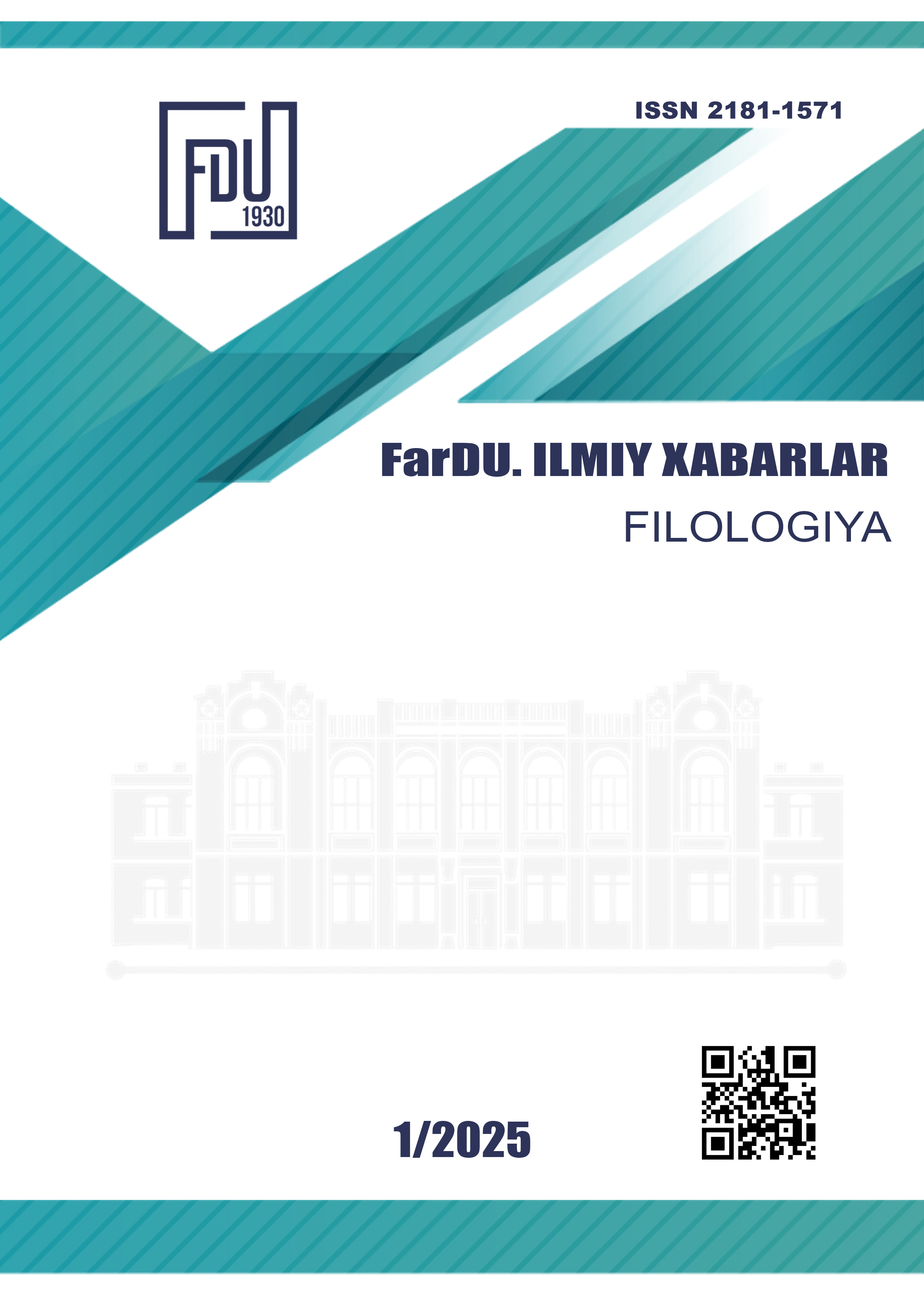DIALOGICAL SPEECH AND ITS UNITS
Keywords:
dialogic speech, locutionary act, illocutionary act, perlocutionary act, speech units, replica, performative formula, replica-reaction, replica-stimulusAbstract
This article analyzes dialogic speech, its structural units and the concepts of speech act. The article also studies the phenomenon of intentional analysis, which expresses the communicative purpose of the speaker, based on examples. In addition, the role of locutionary, perlocutionary and illocutionary acts, which form the basis of speech units, in the process of communication is explained by analyzing examples of dialogic speech in English and Uzbek. It is explained at what point in the speech situation the above-mentioned acts are manifested and what role the speaker's internal purpose in communication plays in this. At the same time, it is determined that in the performative formula, that is, in the process of openly expressing the speaker's intention, tone, word order and inflection are the main means of expression. In terms of the structural structure of speech units and the communicative meaning they express, speech acts are divided into two groups: mediated and unmediated, and compared using examples. The article also analyzes the dialogue in terms of form and provides information about its main parts, replicas. It is determined that replicas are divided into stimulus and response parts, and the linguistic units used in them are different.
References
Austin J.L. How To Do Things With Words. –Oxford: Oxford Univ. Press., 1962; 2 nd ed., 1973.- 167 р
Abdulla Qahhor. Hikoyalar to’plami. Toshkent 2013.78-bet.
Searle J.R. Speech Acts: An Essay in the philosophy of language. Cambridge: Cambridge University Press, 1969
Блох, М.Я. Слово и его воплощения / М. Я. Блох // Вестник Иркутского
Макаров, М.Л. Основы теории дискурса / М. Л. Макаров.– М.: ИТДГК
«Гнозис», 2003.– 280 с
Власян, Г.Р. К проблеме формального членения разговорного диалога / Г. Р. 2001.
Hakimov M. O'zbek pragmalingvistika asoslari. –Toshkent, 2013.6-bet
Sh.Safarov. Pragmalingvistika.Toshkent 2008.80-bet.
Вендлер З. Иллокутивное самоубийства. В кн.: Новое в зарубежной лингвистике. Вып. 16. Лингвистическая
прагматика. – М: Прогресс, 1985.
Downloads
Published
Issue
Section
License
Copyright (c) 2025 Scientific journal of the Fergana State University

This work is licensed under a Creative Commons Attribution-NonCommercial-NoDerivatives 4.0 International License.
Most read articles by the same author(s)
- Ozoda Xalimova, Azamjon Xusanov, VOICE DISORDERS TYPES OF VOICE DISORDERS AND CAUSES , Scientific journal of the Fergana State University: No. 1 (2023): Scientific journal of the Fergana State University (Exact and natural sciences)
- Ozoda Yadgarova, PROJECTIVE METHODS IN PERSONAL STUDY ANALYSIS OF ADVANTAGES , Scientific journal of the Fergana State University: No. 1 (2023): Scientific journal of the Fergana State University (Exact and natural sciences)
- , , STUDYING THE MACRO- AND MICROELEMENT COMPOSITION OF HORSERADISH , Scientific journal of the Fergana State University: No. 3 (2024): FarDU.Ilmiy xabarlar jurnali (Aniq va tabiiy fanlar)
- , , CHEMICAL COMPOSITION OF THE HORSERADISH AND METHODS OF USE IN FOLK MEDICINE , Scientific journal of the Fergana State University: No. 3 (2024): FarDU.Ilmiy xabarlar jurnali. Ilova to'plam (Aniq va tabiiy fanlar)
- , DIAGNOSTIC POSSIBILITIES OF PROJECTIVE METHODS IN THE STUDY OF PERSONALITY , Scientific journal of the Fergana State University: No. 2 (2023): Scientific journal of the Fergana State University (Exact and natural sciences)
- , , , STUDYING THE CHEMICAL CONSTITUENTS OF THE ESSENTIAL OIL FROM HORSERADISHLEAVES , Scientific journal of the Fergana State University: No. 1 (2025): FarDU ilmiy xabarlari jurnali (TABIIY FANLAR)
- , , THE ROLE AND IMPORTANCE OF THE DIGITAL ECONOMY IN SHAPING THE ECONOMIC THINKING OF RURAL YOUTH , Scientific journal of the Fergana State University: No. 4 (2024): Scientific journal of the Fergana State University (Social humanities sciences)

